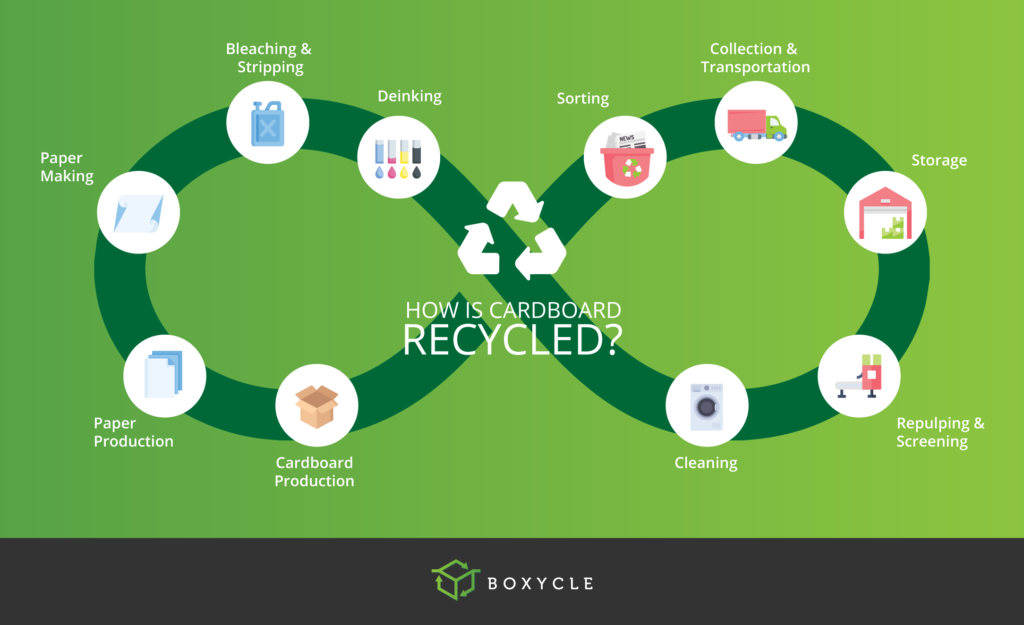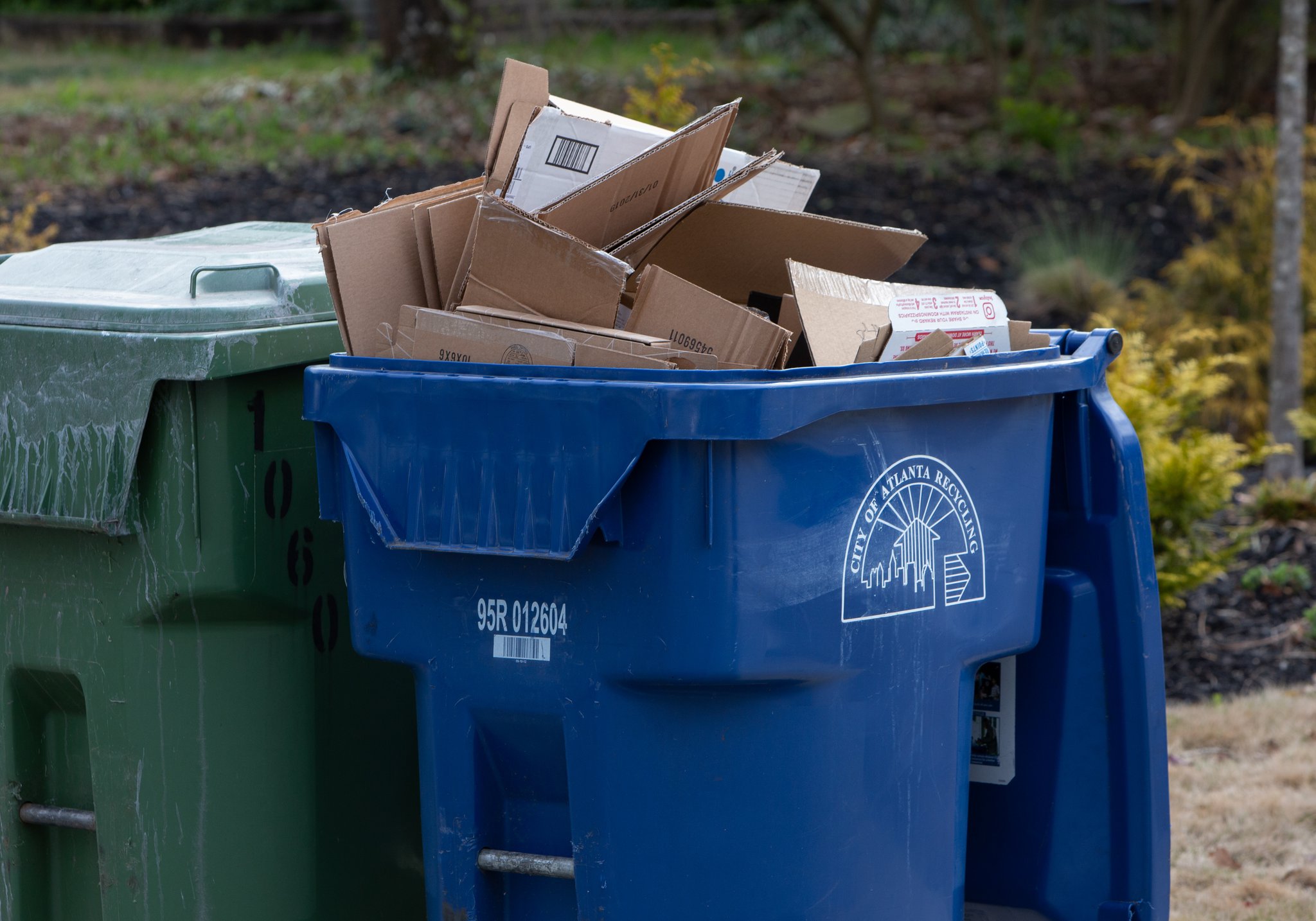Using recycled cardboard is a no-brainer if you consider that
- It takes several tons of wood to create only one ton of cardboard
- It takes less energy to create cardboard out of used cardboard
However, much of the information I found made the answer to “How is cardboard recycled?” sound innocent and downplayed the impact of each step. Does this mean we should not recycle? No, not at all. Recycling is necessary to reduce our impact on our planet, but we won’t be able to recycle our way out of the waste.
As consumers, we can find a way out by reducing our consumption, changing our purchasing habits, and trying to reuse materials whenever we can. The easiest way to change behavior and beliefs is by increasing awareness through education and research to know where our products come from, how they are made, and what happens after we throw them away.
Until then, I will continue to get this “The Good Place-feeling”: even when you believe you do the right thing, you might still unwittingly harm the environment.

So let’s dig into it. What really happens with cardboard once you throw it in the recycling bin?

Step 1: Cardboard is sorted
Once you have exhausted all other upcycling and recycling strategies, you can use designated paper and cardboard recycling container to dispose of your cardboard waste.
Step 2: Cardboard is collected and transported

The collection process varies a lot from country to country. Many will have centralized drop-off points or collection services.
Depending on their recycling streams, some countries collect paper and cardboard together, others will have separate collection strategies.
Step 3: Cardboard is sorted (again) and stored

Used cardboard and paper is transported in bulk or bales at the recycling centers.
Here the recycling centers will sort the cardboard one more time and then compress it using a cardboard baler to make it easier to handle.
The cardboard bales are then transported to paper mills, where they are unbaled.
Step 4: Cardboard is shredded and turned into pulp
It’s paper slushy time.
The cardboard is mixed with water (and often chemicals to speed up the pulping process) to turn into cardboard pulp. This pulp is often mixed with fresh or virgin pulp to increase the strength of the end product. It is possible to recycle paper using recycled pulp alone, but this paper looks grey and flimsy.
The mixture is chopped up and heated, which turns it into strands of cellulose (or fibers). Virgin fiber strands are longer, and recycled fiber strands are shorter and more brittle.
Step 5: Pulp is filtered
Next, with the help of filtering machines, any contamination or impure substances are removed from the material as a whole, not compromising the rest. This is the part where staples, glue, and plastic are removed.
Multiple stages of filtering to remove small particles using floating techniques, magnets, and chemicals.
Step 6: Pulp is deinked
Decolorization chemicals are added to the pulp mixture to remove ink. This is also where bleach might be added to produce crispy white paper.
To improve the strength of the recycled paper, more virgin paper materials can be added to the pulp.
Step 7: Linerboard is pressed

The pulp is pressed into noodle-like shapes, making it much easier to process through the paper-making machine. The paper machine will produce linerboard (long sheets of paper) to create cardboard, paperboard, or paper, depending on the required thickness of the end product.
Step 9: Linerboard is dried, rolled, and transported (again)

The paper machine helps to remove the paper paste’s water so that the material can be dried and pressed into a long paper sheet. Dryer machines or conveyor belts will help to dry the paper and remove all excess water.
Different drying techniques, steam, vibrating conveyor belts, etc. are used to aid in the drying process.
The linerboard is then rolled onto large spools that weigh several tons.
Step 10: Cardboard is produced

And finally, these paper spools are transported to different facilities and turned into cardboard or paper products that you can recycle once again.
After that we go back to … Step 1.
The circular economy is beautiful, isn’t it?
Summary
As you can see from this cardboard lifecycle breakdown, recycling paper is highly energy and labor-intensive, and it’s almost impossible to produce high-quality paper without adding virgin materials.
On top of that, the chemicals used during the recycling process still impact our environment.
It seems we are between a rock and a hard place when protecting our natural resources.
Therefore, before throwing any cardboard into the recycling bin, we recommend exhausting different used cardboard strategies to extend their lifecycle with each use.
Michiel
Father of two who hopes that by sharing the things he learned, he can leave the world behind slightly better than he found it.
